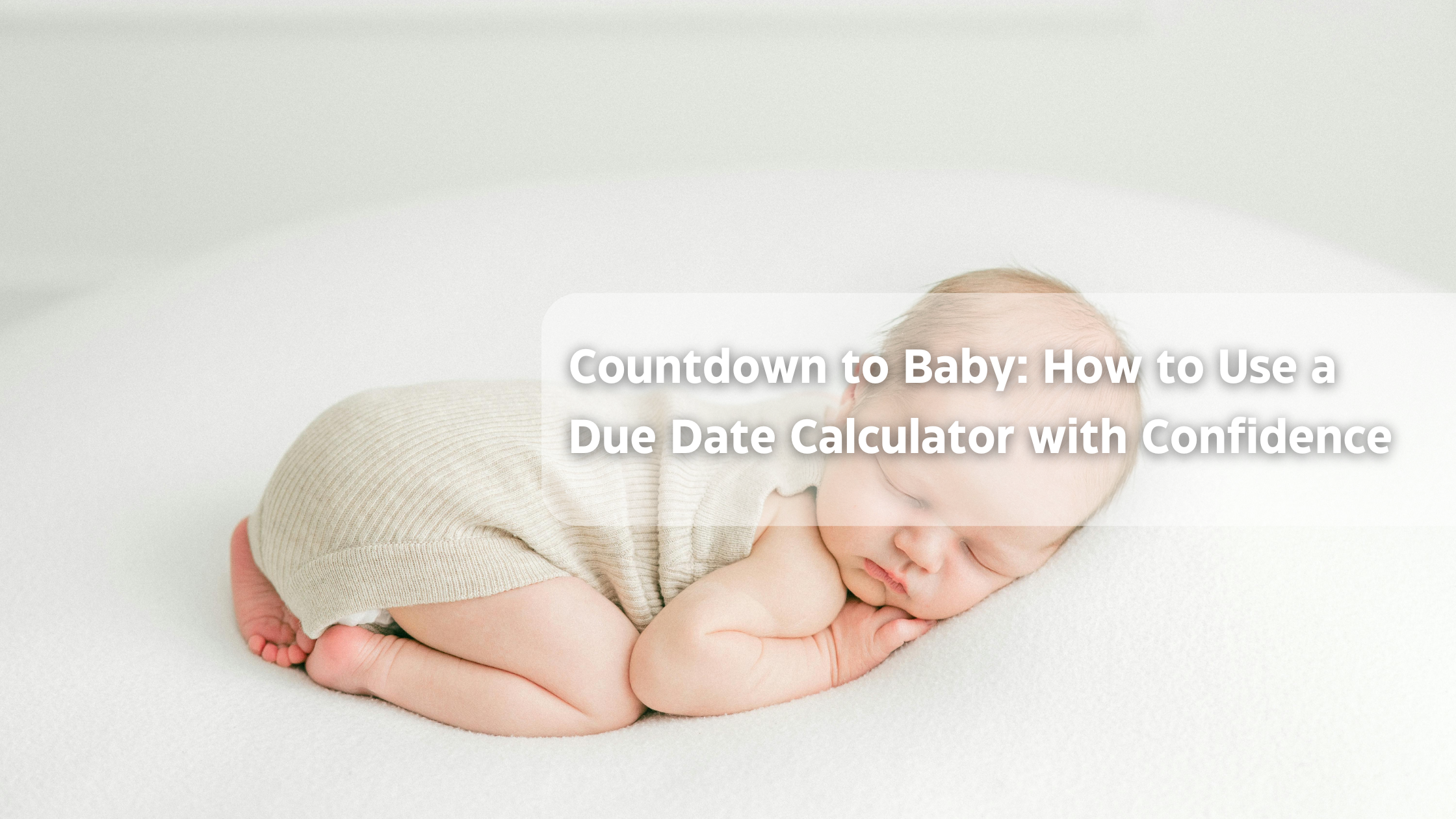Countdown to Baby: How to Use a Due Date Calculator with Confidence
UNDERSTANDING YOUR DUE DATE: FACTORS & FORMULAS

WHAT DETERMINES YOUR DUE DATE?
Your due date is mostly calculated based on the first day of your last menstrual period (LMP). Doctors usually add 280 days, or 40 weeks, to that date to estimate when your baby might arrive. This method assumes that you have a regular 28-day cycle and that you ovulate around day 14. But every woman’s body is different, your cycle length and when you ovulate can change from person to person. Other things that can affect your due date include your age, overall health, if you’ve had any fertility treatments, and whether this is your first pregnancy. It’s important to remember that only about 5% of babies are born on their exact due date. So, the date is just a helpful estimate, not a guarantee.
THE ROLE OF A DUE DATE CALCULATOR IN PREGNANCY
A due date calculator is a helpful tool for expectant mothers, offering an estimated date of delivery (EDD) based on key information like your last menstrual period. This estimate helps you and your doctor plan important things like prenatal checkups, tests, and tracking your baby’s growth. It also gives you a general timeline for preparing for maternity leave and getting ready for your baby’s arrival. While it’s a useful guide, keep in mind that it’s just an estimate your actual delivery date may be earlier or later.

Step-by-Step: Using a Due Date Calculator App
1. Choose a Trusted App
There are many pregnancy apps that include due date calculators, and some of the most popular and reliable ones are:
- What to Expect Pregnancy & Baby Tracker
- Ovia Pregnancy Tracker
- Flo Period & Ovulation Tracker
- BabyCenter Pregnancy Tracker

2. Enter the First Day of Your Last Period (LMP)
Most due date calculators work by using the first day of your last menstrual period (LMP) as the starting point. This method is commonly used because of ovulation and the chance of conception usually happens about two weeks after your period begins. If your cycles are regular (around 28 days), this gives a fairly accurate estimate of when your baby might arrive. Even if you're not sure exactly when you conceived, knowing the first day of your last period helps give doctors and apps a good starting point to calculate your due date.
3. Adjust for Cycle Length (Optional)
If your menstrual cycle is longer or shorter than the typical 28 days, many due date calculator apps let you adjust the cycle length. This helps provide a more accurate estimate, since ovulation and therefore conception can happen earlier or later depending on your cycle.
4. Use Conception or IVF Date (If Applicable)
If you know the exact date of conception or had IVF, you can use that information instead of your last period. For IVF pregnancies, the due date is calculated based on the embryo transfer date:
- If it was a Day 3 embryo, add 266 days to the transfer date.
- If it was a Day 5 embryo, add 263 days.
This method gives a more precise due date, especially for IVF pregnancies.
5. Tap “Calculate” and Get Your Due Date
Once you’ve entered your information, simply tap “Calculate.” The app will show your estimated due date and tell you which week of pregnancy you’re currently in. Most apps also provide helpful features like personalized tips, weekly updates on your baby’s growth, and reminders to support your health throughout your pregnancy.
COMMON MISTAKES TO AVOID WHEN USING A DUE DATE CALCULATOR
While due date calculators are easy to use, it’s important to avoid common mistakes that can affect accuracy. Make sure you enter the correct date for your last menstrual period (LMP), as even a small error can change the estimate. Don’t assume your cycle is the standard 28 days if it’s not, this can lead to a misleading result. Also, remember that the calculator is just a helpful guide, not a guarantee. Factors like your age, health, previous pregnancies, and irregular periods can all influence your actual due date. If you’re unsure, always check with your healthcare provider for the most accurate information.
SUPPORTING YOURSELF WITH ACCURATE PREGNANCY CALCULATIONS
The Importance of Accurate Due Dates for Maternal and Child Health
Why an Accurate Due Date Matters
For Healthcare Providers:
- Track Baby’s Growth
Knowing the due date helps doctors check if the baby is growing well. - Time Tests Correctly
Prenatal tests need to be done at certain times—an accurate due date ensures they’re not missed. - Plan Safe Deliveries
It helps doctors decide the best time to induce labor or do a C-section if needed. - Spot Complications Early
Conditions like preterm labor or high blood pressure can be managed better with a clear timeline.
For Mothers:
- Plan Maternity Leave
Helps you inform your workplace and get ready to take time off. - Get Ready for Baby
You can prepare your home, pack your hospital bag, and shop for baby items in time. - Understand Pregnancy Changes
Helps you know what symptoms to expect at each stage. - Feel More Prepared
Knowing when baby might arrive gives peace of mind and reduces anxiety.

Resources and Tools for Managing Your Pregnancy Journey
There are many helpful tools to guide you through pregnancy. Apps can track your baby’s weekly growth, while online forums let you connect with other moms-to-be. Prenatal classes teach you about childbirth and newborn care, and books offer deeper knowledge about your body and pregnancy. Nutrition calculators help ensure you're eating well, and tools like kick counters and contraction timers are useful in the later stages. These resources can support and prepare you but always follow your doctor’s advice. Every pregnancy is unique, so trust your body, stay informed, and enjoy the journey.
WHAT TO REMEMBER
Understanding and accurately estimating your due date is key to a healthy and well-prepared pregnancy. While calculators and tools provide helpful guidance, every pregnancy is unique, so always stay connected with your healthcare provider. With the right support and knowledge, you can confidently navigate your pregnancy journey and look forward to welcoming your baby.
